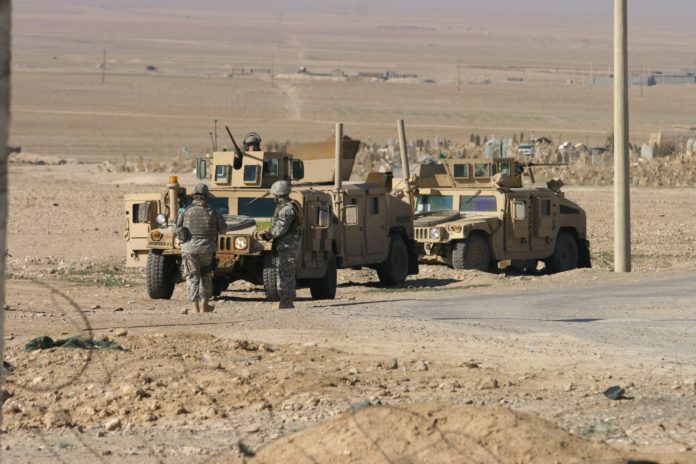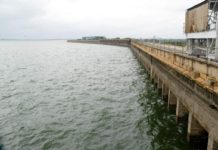The fight against ISIS has continued for two years now. Militants from the Islamic State took over the cities of Samarra, Tikrit, and Mosul. By mid-2014, the Islamic State had taken over most of Iraq. The government had lost control of its border with Jordan and Syria. In August 2014, the US government fully committed to fighting ISIS within Iraq and commenced airstrikes to combat the terrorists. From this time, war has ravaged within Iraq’s borders. However, the most notable victories for Iraqi forces in conjunction with US troops have come in recent months. The progress has come under the Trump administration, with the President receiving frequent reports as to the state of the war.
Further, President Trump’s clear stand against terrorism over the period of his campaign as well as during his ongoing tenure at the Oval Office has fueled increased efforts to combat Islamic State militants.
So, what’s the story so far?
- Territorial Loss
As of January 2016, the Islamic State had control of about 78,000 square kilometers. By December 2016, however, the militants controlled 60,400 sq. km. This is a close to 25 percent decrease in territorial claims by the terrorist group. Iraqi and US coalition forces have, however, taken key ISIS areas only in recent months.
- The fight for Mosul
Mosul was the second largest city in Iraq before the Islamic State convened an attack that spread all over the country and into Syria. It is the capital of Nineveh province and has significant oil resources at hand. The city had a population of more than 800,000 at the time and housed many different minorities. The Islamic State’s control of Mosul became a symbol of its power throughout Iraq.
In October 2016, the US-led coalition fighting the Islamic State through air strikes began its campaign to recapture Mosul. The state of the main infrastructural elements for Mosul’s recapture, however, was daunting.
- Mosul Airport
Islamic State militants had carved wide trenches into vast areas of the airport’s landing field. They had also placed rubble along the lengths of these trenches.
- Mosul’s Roads
Jihadists had put up numerous barricades across Mosul’s key routes, rendering them impassable. The obstacles, possibly constructed from the rubble of destroyed buildings, were made North of the airport so as to deny offensive forces access to the airport. Other barricades were put up on roads in Wadi Hajar, along Highway 1 and towards the West of the highway.
- Bridges in Mosul
Offensive militants destroyed bridges built across River Tigris and linked the East and West sides of the city. This action was in a bid to stop militants from further expanding their reach and gaining access to resources.
Coalition Forces Reaching Tigris River
At the beginning of this year, coalition troops reached the banks of the Eastern side of River Tigris for the first time. They did so at one of the bridges Islamic State militants had damaged.
“During the advance, Daesh (IS) tried to confront us from the historic hill,” Lt Gen Abdelwahab al-Saadi said. The Lieutenant went on to say that Jihadists using the hill to fire at the oncoming troops were killed by warplanes from the United States. This enabled them easier access to Eastern Mosul.
Mosul University and Government Buildings
Iraqi forces took over government buildings on the Eastern Side of Mosul mid-January this year. Further, the coalition of troops took Mosul University which had previously been used as Islamic State’s headquarters. The additional strength from Iraq’s federal police within the area had the operation take a shorter time than expected.
Following intelligence reports, the troops also discovered various chemical substances within the university which were likely used in making bombs. This evidence enabled the coalition forces to have a better view of what to expect in forthcoming battles against ISIS militants, who had used mustard gas before in some of their attacks.
After the taking over of these landmarks, the troops pressed on to regain full control of Eastern Mosul.
Taking Over Eastern Mosul
Following the recapture of government buildings, Iraqi forces were able to liberate the Eastern side of Mosul from the reign of Islamic State militants. Iraqi Prime Minister Haider Al-Abadi reported this progress on January 24th on the state television.
The US coalition had helped the capture of Mosul by preventing drone and sniper attacks onto innocent civilians and invading Iraqi forces. They did this by preventing the communication of Islamic militants to their drones by scrambling their signals. This ensured that Iraqi troops a safer entry and also caused the collapse of these weapons.
Mosul International Airport
Iraqi security forces reclaimed Mosul International Airport, which was a critical area of Islamic State’s control. The operation lasted four hours, after which the army had gained the airport’s ground. The operation included air support for the troops.
ISIS militants continued to fire mortars at the coalition forces from locations deeper within the city’s holds. This operation was preceded by a week of air strikes that were led by American troops. The air strikes resulted in the bombing of 33 different targets, including one area where ISIS were assumed to be having their headquarters.
The capture of the airport brought Iraqi troops within a mile from Western Mosul.
In support of these passages, America has also used armed drones and American Army Apache Helicopters to fire Hellfire missiles at the Islamic militants and their military bases. The air support contributed to the Iraqis advance and as such has led to the coalition troops being ahead of schedule.
Conquests to Western Mosul
The battle for Western Mosul currently continues. The coalition forces, however, face significant limitations in their progress in taking Western Mosul. The area’s narrow streets and high population density could result in the injury of numerous civilians during the operation. The forces are trying to avoid this from happening at all costs. Further, some districts within Western Mosul are believed to be pro-ISIS. This means that the forces will have to take particular care in its movements through Western Mosul and onto the Old City.
It has only been a few months since Trump has been President. However, the war on the Islamic State in Iraq appears to be its final stages, with the principal areas having been taken in the past few months.




